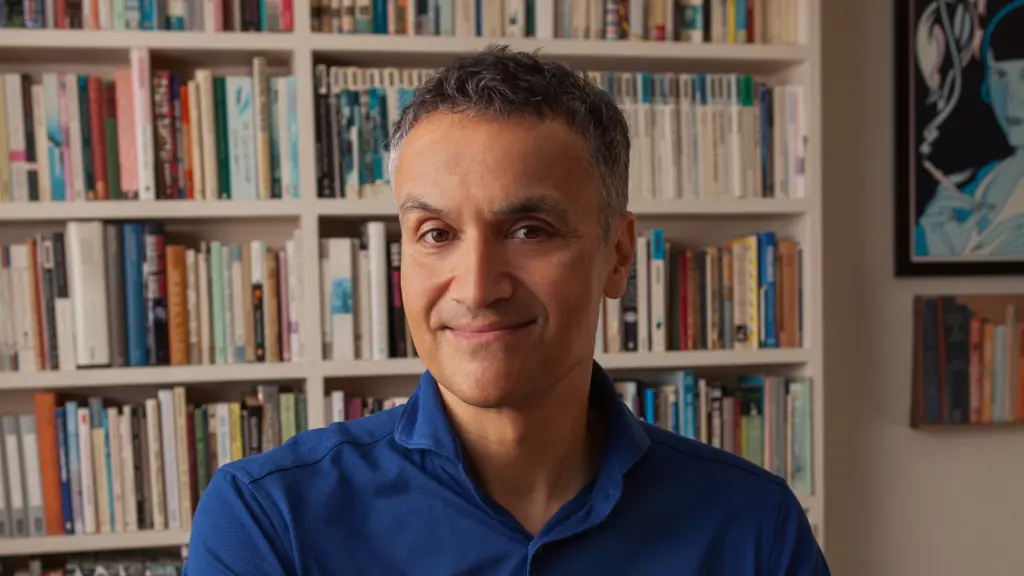A guest article by Carl Honoré, award-winning writer, broadcaster and speaker. Carl’s second TED Talk is called Why We Should Embrace Ageing as an Adventure, and his book, Bolder, is a manifesto against ageism and explores how we can all make the most of the new longevity.
A few months ago, a friend of mine lied on a job application.
Not about her skills or achievements. She didn't even claim fluency in a language she barely spoke. Instead, she knocked five years off her age, dropping from 51 to 46.
"I'm not happy or proud about it, but it had to be done," she says. "Being the wrong side of 50 can be toxic in the job market."
Whatever your views on fudging CVs, my friend has a point. Thanks to the longevity revolution, one in three workers in the UK is now over 50. And yet youth remains a trump card in the workplace.
Older employees are routinely passed over for promotion, discarded first in hard times, denied training or given unfulfilling work. Three months after redundancy, people over 50 are only a third as likely to be back in work as those under 50.
Mark Zuckerberg explained this everyday ageism with a chilling claim: “Young people are just smarter.”
But is he right? Are older workers a burden? Is the ageing population a one-way ticket to the death of productivity and innovation?
The answer is a resounding no.
One reason: brawn counts for less and less in the modern workplace. What matters now is brainpower – and that holds up deep into later life. Just look at Sir David Attenborough.
In fact, the future looks brighter than ever for our brains. According to the International Monetary Fund, the average 70-year-old today has the same cognitive oomph as a 53-year-old in 2000.
In other words, Zuckerberg is flat-out wrong. Many skills that drive job performance improve as we age.
Vocabulary, general knowledge and expertise keep on expanding. We get better at seeing the big picture, weighing multiple viewpoints and spotting the patterns and details that help solve thorny problems. Performance experts at Harvard have concluded that the ability to grasp how the world works ripens fully around the age of 50.
With age comes greater social acumen. We get better at reading people, cooperating, negotiating and leading. We learn how to put ourselves in other’s shoes, find compromises and resolve conflicts. All of which can supercharge productivity.
Resilience also comes with age. We feel more at ease in our own skin, less worried about what others think of us and more willing to speak our minds – a perfect antidote to workplace groupthink.
And creativity? Growing older doesn't kill that off, either. On the contrary, humans can go on being creative right up to the end of life, and some forms of creativity depend on two things that only ageing can confer: time and experience.
Which is why history is studded with artists, from Michelangelo and Matisse to Beethoven and Bach, doing triumphantly creative work in their later years. Momofuku Ando invented instant noodles in his late 40s; Benjamin Franklin was 74 when he created the first bifocals; Thomas Edison filed patents until his death at the age of 84. Maya Angelou put it best: “You can’t use up creativity. The more you use, the more you have.”
Maybe that's why being older can also be an asset in the startup world. The word 'entrepreneur' conjures images of fresh-faced founders pulling all-nighters in hoodies. Look at the young guns strutting and preening on The Apprentice or all the fuss around the annual Forbes 30 Under 30 List.
But the data tells a different story. Study after study shows that you are more likely to launch a successful business in middle age or beyond.
Let’s not get carried away, though. Ageing isn't all sunshine and rainbows. We lose some cognitive zip as we grow older. Our brains take longer to retrieve certain memories, absorb information and solve maths-based problems.
On the upside, most jobs involve multiple forms of cognition, meaning the older brain can use its strengths – such as greater accuracy – to make up for any speed deficit. But the fact remains that younger brains do some things better and faster.
That's why the way forward here is not to replace the cult of youth with the cult of the oldster. The workplace needs young people. They bring energy, fresh ideas and new perspectives that challenge the status quo and drive innovation.
Bottom line: there is no wrong side of 50. There's just the side you're on.
The biggest challenge we face in the workplace is therefore not ageing – it's ageism, which is also directed at young people. You can hear jokes about senior moments and snowflakes in the same office, sometimes in the same sentence.
The best way to vanquish ageism and harness the new longevity is to create workplaces where all ages can thrive together. Multigenerational teams are particularly good at firing up innovation and productivity.
How can we tackle ageism in the workplace?
By removing age as a filter in recruitment; offering training and on-the-job learning at every stage of a career; bringing the generations together through reverse mentorship programmes; discouraging ageist language.
Honesty also helps. Lying about your age gives the number a power it does not deserve – and reinforces the canard that younger is always better. Far better to own your age, and then go out there and show the world (and yourself) what you can do.
In the end, my friend did just that. She stopped lying about her age and instead began trumpeting her long years of experience as a superpower.
The other day she texted to say she'd landed an interview for her dream role. Alongside a lion emoji, her final words were:
"This fiftysomething is ready to roar."
Find out how you can challenge ageism in the workplace here.
